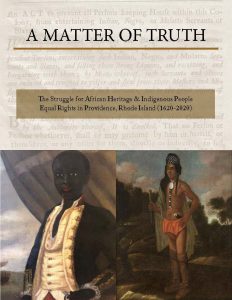![]() This news article of 1918 comes from our family collection that includes items from my great uncle, Charles Henry Barclay who during WWI served as a 1st Lieutenant with the 372nd regiment in France. The article describes the concerns that African American (Negro) soldiers were being given more dangerous combat duties as compared to white soldiers. The American Expeditionary Forces during the war were commanded by General John “Black Jack” Pershing who responds directly to the reports as false and that the “Negroes were in high spirits and that their only complaint was that they were not given more active service.” Those comments coming from General Pershing are historically relevant due to his own interaction with African American troops that dated back to 1892 when he took command of the 10th Cavalry Regiment, nicknamed the “Buffalo Soldiers.” During the Spanish American War, Pershing would lead the 10th Cavalry on the famous charge at San Juan Hill joining the famous Rough Riders of future President Theodore Roosevelt. Pershing’s command of African American troops leading up to the First World War would enthuse his fellow officers to give him the nickname, “Black Jack” largely as a sardonic description of his command.
This news article of 1918 comes from our family collection that includes items from my great uncle, Charles Henry Barclay who during WWI served as a 1st Lieutenant with the 372nd regiment in France. The article describes the concerns that African American (Negro) soldiers were being given more dangerous combat duties as compared to white soldiers. The American Expeditionary Forces during the war were commanded by General John “Black Jack” Pershing who responds directly to the reports as false and that the “Negroes were in high spirits and that their only complaint was that they were not given more active service.” Those comments coming from General Pershing are historically relevant due to his own interaction with African American troops that dated back to 1892 when he took command of the 10th Cavalry Regiment, nicknamed the “Buffalo Soldiers.” During the Spanish American War, Pershing would lead the 10th Cavalry on the famous charge at San Juan Hill joining the famous Rough Riders of future President Theodore Roosevelt. Pershing’s command of African American troops leading up to the First World War would enthuse his fellow officers to give him the nickname, “Black Jack” largely as a sardonic description of his command.
 For as much as General Pershing knew first-hand of the bravery, discipline and preparedness of African American troops, he would bow to the political pressures of President Woodrow Wilson and the larger white American society that would not condone black and white troops fighting side by side in trenches in Europe. Disappointingly, Pershing would reach a decision to place African American troops under foreign command and combat with our French allies.
For as much as General Pershing knew first-hand of the bravery, discipline and preparedness of African American troops, he would bow to the political pressures of President Woodrow Wilson and the larger white American society that would not condone black and white troops fighting side by side in trenches in Europe. Disappointingly, Pershing would reach a decision to place African American troops under foreign command and combat with our French allies.
As WWI was drawing to an end during the summer and fall of 1918, Allied American and French commanders agreed that segregated black regiments would fight with the French Army under the command of French commanding officers. The first African American division to arrive for combat in France was the 93rd Infantry Division and their four regiments that were comprised of the 369th, 370th, 371st and 372nd. They would serve with distinction under the 157th French Division also known as the “Red Hand” Division.
These gallant African American soldiers risked their lives for the lofty goals of world peace and freedom that was still a dream in their own country. But fight they did, and when they returned, they would form the new generation of African Americans that would push for a human dignity and equality that they had earned with their blood on foreign soil under foreign command.
- From Enslavement to Entitlement - June 11, 2020
- Rhode Island African Heritage & History Timeline: 17th through 19th Centuries - January 21, 2016
- A Woman of Valor - October 3, 2014


 Click on image to view pdf
Click on image to view pdf
January 31, 2016 at 10:01 pm
Hi Keith and Theresa –
I’m having a little trouble finding an e-mail for you.
I would love to exchange contact info.
Also today I’ve been searching the Colonial records for the mention of the Seaflower using a dissertation and the citation in that dissertation. I may be interpreting it incorrectly or the citation is wrong but I cannot find the primary source concerning the Seaflower. Would you please direct me to it?
February 7, 2016 at 10:06 pm
Marjory – you can contact us at theresa@1696heritage.com